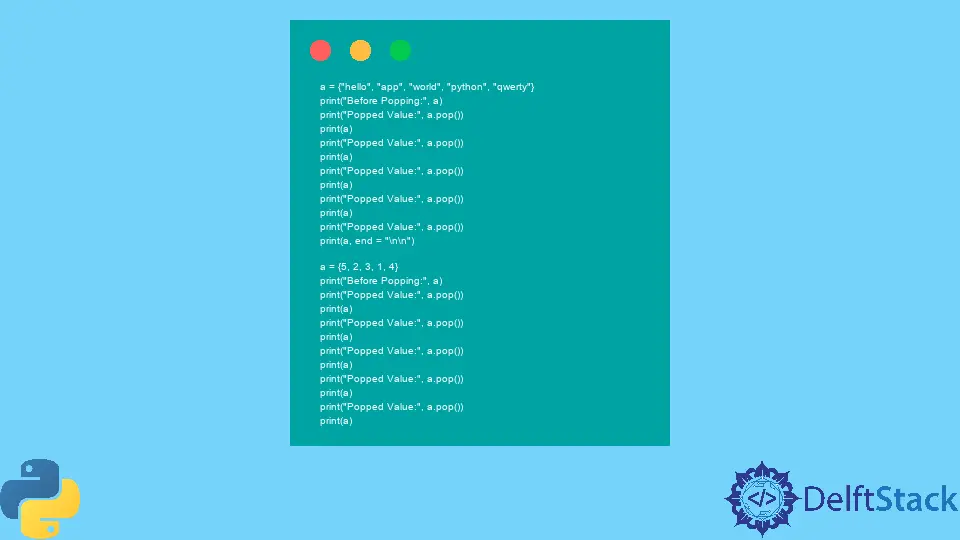Python 集合 Pop() 方法
Vaibhav Vaibhav
2023年10月10日
Python
Python Set

集合是 Python 中的內建資料結構。儲存在集合中的元素是無序且不可更改的。
無序意味著集合內的元素沒有固定的順序。不可更改意味著元素一旦新增到集合中就不能更改。
此外,集合不允許任何重複值。如果我們嘗試將已經存在的值新增到集合中,它將不會被新增。
當元素從集合中彈出或移除時,我們得到最頂層的元素。我們可以使用 Python 的 pop() 方法執行彈出操作。在本文中,我們將瞭解這種方法。
Python 中集合的 pop() 方法
pop() 方法從 set 中彈出最頂部的元素。如果集合中不存在任何元素,則會引發以下錯誤。
TypeError: pop expected at least 1 arguments, got 0
請參考以下 Python 程式碼,藉助一些相關示例瞭解 set() 方法的工作原理。
a = {"hello", "app", "world", "python", "qwerty"}
print("Before Popping:", a)
print("Popped Value:", a.pop())
print(a)
print("Popped Value:", a.pop())
print(a)
print("Popped Value:", a.pop())
print(a)
print("Popped Value:", a.pop())
print(a)
print("Popped Value:", a.pop())
print(a, end="\n\n")
a = {5, 2, 3, 1, 4}
print("Before Popping:", a)
print("Popped Value:", a.pop())
print(a)
print("Popped Value:", a.pop())
print(a)
print("Popped Value:", a.pop())
print(a)
print("Popped Value:", a.pop())
print(a)
print("Popped Value:", a.pop())
print(a)
輸出:
Before Popping: {'qwerty', 'world', 'python', 'hello', 'app'}
Popped Value: qwerty
{'world', 'python', 'hello', 'app'}
Popped Value: world
{'python', 'hello', 'app'}
Popped Value: python
{'hello', 'app'}
Popped Value: hello
{'app'}
Popped Value: app
set()
Before Popping: {1, 2, 3, 4, 5}
Popped Value: 1
{2, 3, 4, 5}
Popped Value: 2
{3, 4, 5}
Popped Value: 3
{4, 5}
Popped Value: 4
{5}
Popped Value: 5
set()
Enjoying our tutorials? Subscribe to DelftStack on YouTube to support us in creating more high-quality video guides. Subscribe
作者: Vaibhav Vaibhav
